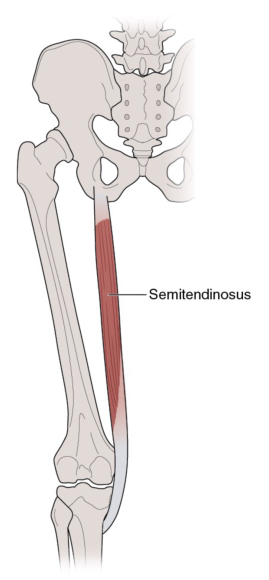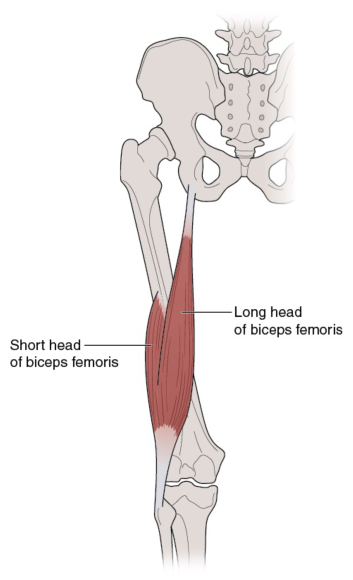Learn more about the hamstring group
This is an excerpt from BioMechanics Method for Corrective Exercise With HKPropel Online Video, The by Justin Price.
Semitendinosus (Hamstring Group)
Muscle specifics: A hamstring muscle on the back of the leg. It originates on the ischial tuberosity of the pelvis (i.e., the “sit bone”), travels down the back of the upper leg, crosses the knee joint, and inserts on the medial side of the tibia a little lower down than the semimembranosus (Agur and Dalley 2013).
Muscle action(s): Bends (flexes) the knee and pushes (extends) the hips forward. It also helps with inward rotation of the leg when the knee is bent (Gray 1995).
Real-life movements: The bungee cord action of the semitendinosus muscle helps decelerate flexion of the hips when the knee is relatively straight. This motion helps load the muscle with potential energy that is then used to help extend the hips when a person stands erect.
Real-life movement example: Acts like a bungee cord to decelerate flexion of the hips during movements such as bending forward at the waist to pat a dog or tie your shoe laces. Since the semitendinosus inserts at the tibia, it also helps control the rotation of the lower leg during weight-bearing activities like walking and running.
Helpful tips: The semitendinosus muscle works in concert with the semimembranosus muscle to help minimize stress to the knees, hips, and lower back.

Biceps Femoris (Hamstring Group)
Muscle specifics: A hamstring muscle on the back of the leg. It has two origin points: The long head originates on the ischial tuberosity of the pelvis (i.e., “the sit bone”), and the short head originates lower down on the femur. The muscle travels down the back of the upper leg, crosses the knee joint, and inserts on the outside of the fibula and tibia (Agur and Dalley 2013).
Muscle action(s): Both the long head and the short head of the biceps femoris are responsible for bending the knee (knee extension), and the long head also helps extend the hips. Both heads help with outward rotation of the leg when the knee is bent (Gray 1995).
Real-life movements: The bungee cord action of the biceps femoris helps decelerate flexion of the hips and extension of the knee. It also helps decelerate internal rotation of the lower leg.
Real-life movement example: Acts like a bungee cord to decelerate hip flexion during movements such as bending over at the waist to touch your toes or pick a flower. It also helps control internal rotation of the lower leg during weight-bearing activities like walking and running.
Helpful tips: All of the hamstring muscles work in concert like guide ropes coming up from the lower leg to help control movement of the hips, pelvis, and lower back during weight-bearing activities.

SHOP

Get the latest insights with regular newsletters, plus periodic product information and special insider offers.
JOIN NOW


